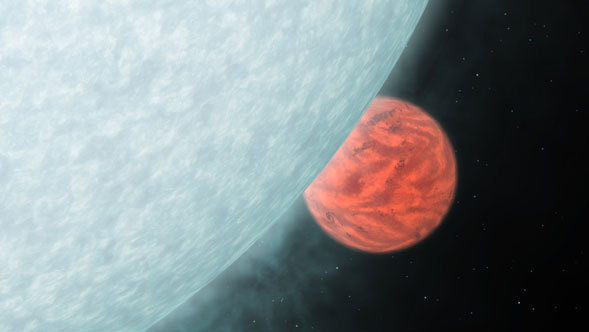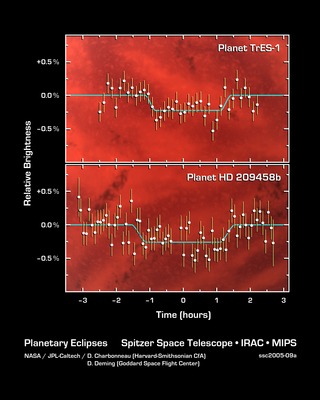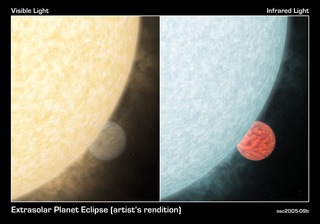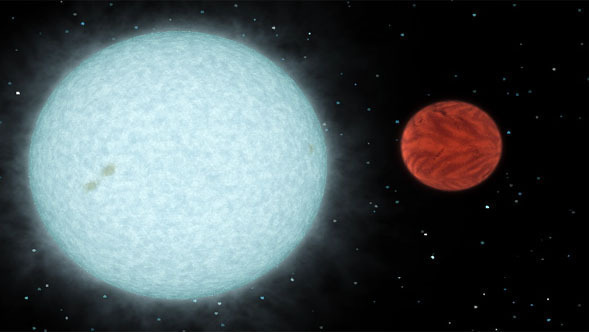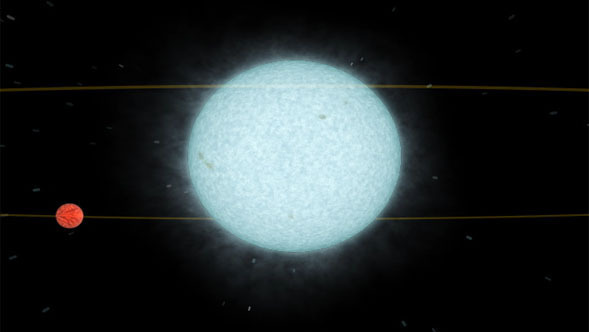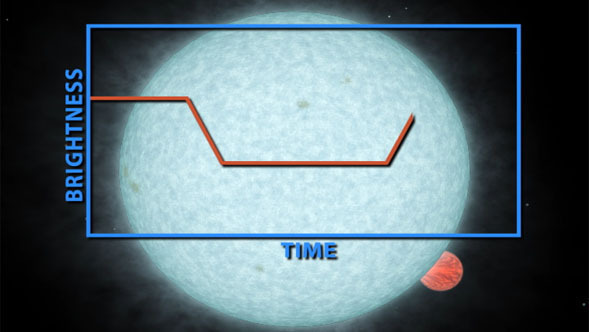How to Measure a Planetary Eclipse
Science Animations Video • March 22nd, 2005 • ssc2005-09v3
This artist's animation shows a close-up view of a distant giant planet passing behind its star as a regular part of its orbit. By studying "secondary eclipses" like this in infrared light, astronomers can capture and study the direct light of known extrasolar planets. Though they cannot actually distinguish the planet from its star, they can detect changes in the system's total light.
Why a secondary eclipse? When a planet transits, or passes in front of, its star, it partially blocks the light of the star. When the planet swings around behind the star, the star completely blocks its light. This drop in total light can be measured to determine the amount of light coming from just the planet, as demonstrated in the graph overlay.
Why infrared? In visible light, the glare of a star overwhelms its planetary companion and the little light the planet reflects. In infrared, a star shines less brightly, and its planet gives off its own internal light, or heat radiation, making the planet easier to detect.
By observing these secondary eclipses at different infrared wavelengths, astronomers can obtain the planet's temperature, and, in the future, they may be able to pick out chemicals sprinkled throughout a planet's atmosphere. The technique also reveals whether a planet's orbit is elongated or circular.
This strategy will not work for all known extrasolar planets. It is ideally suited to study those Jupiter-sized planets previously discovered to cross, or transit, between us and the Sun-like stars they orbit, out to distances of 500 light-years. NASA's Spitzer Space Telescope was the first to successfully employ this technique.
In this animation, the colors reflect what our eyes might see if we could retune them to the invisible, infrared portion of the light spectrum. The hot star is a bit fainter than it would appear in visible light, and the planet glows more intensely. Their hues represent relative differences in temperature. Because the star is hotter than the planet, and because hotter objects give off more blue light than red, the star is depicted in blue, and the planet, red.
Video Credit: NASA/JPL-Caltech/R. Hurt (SSC/Caltech)
